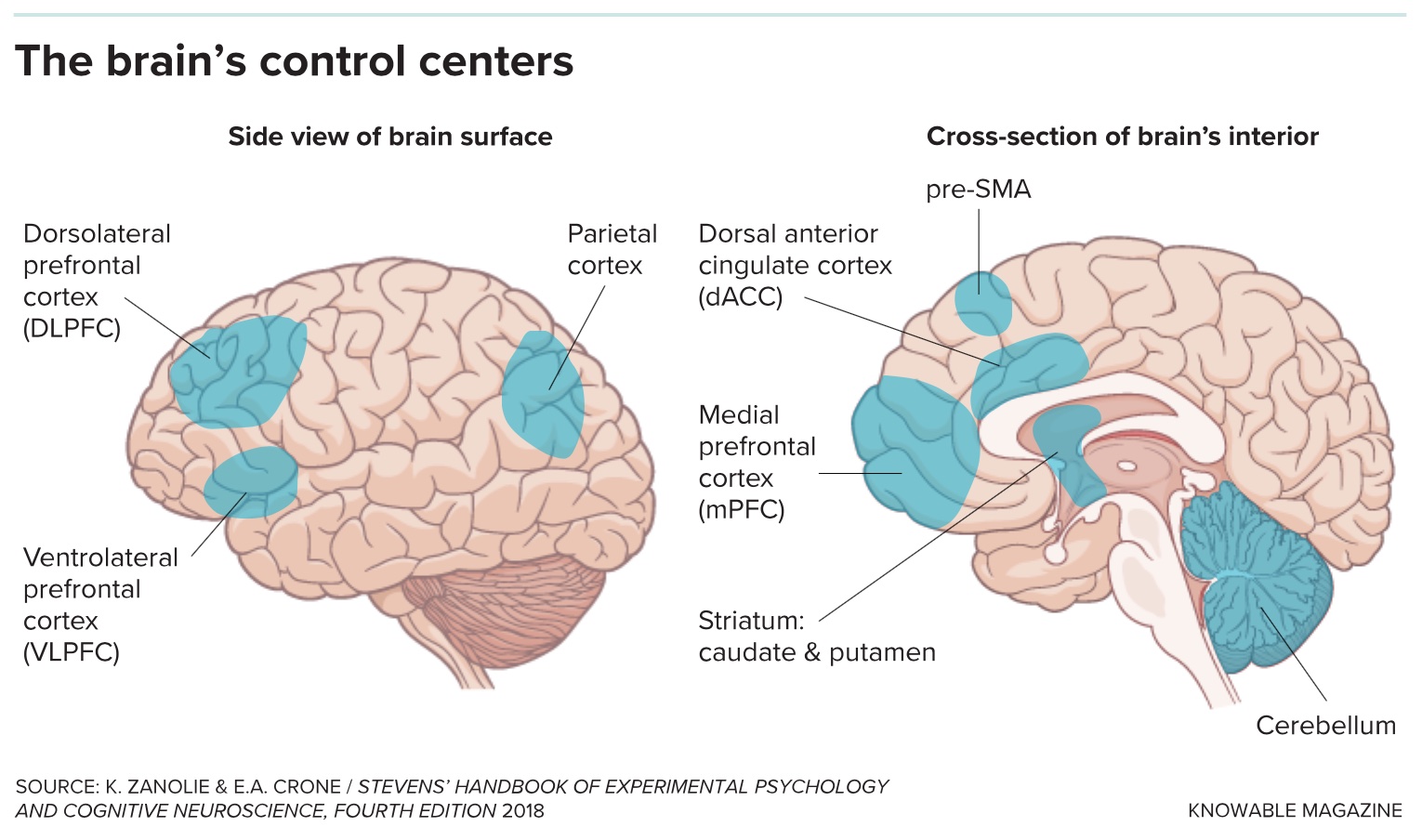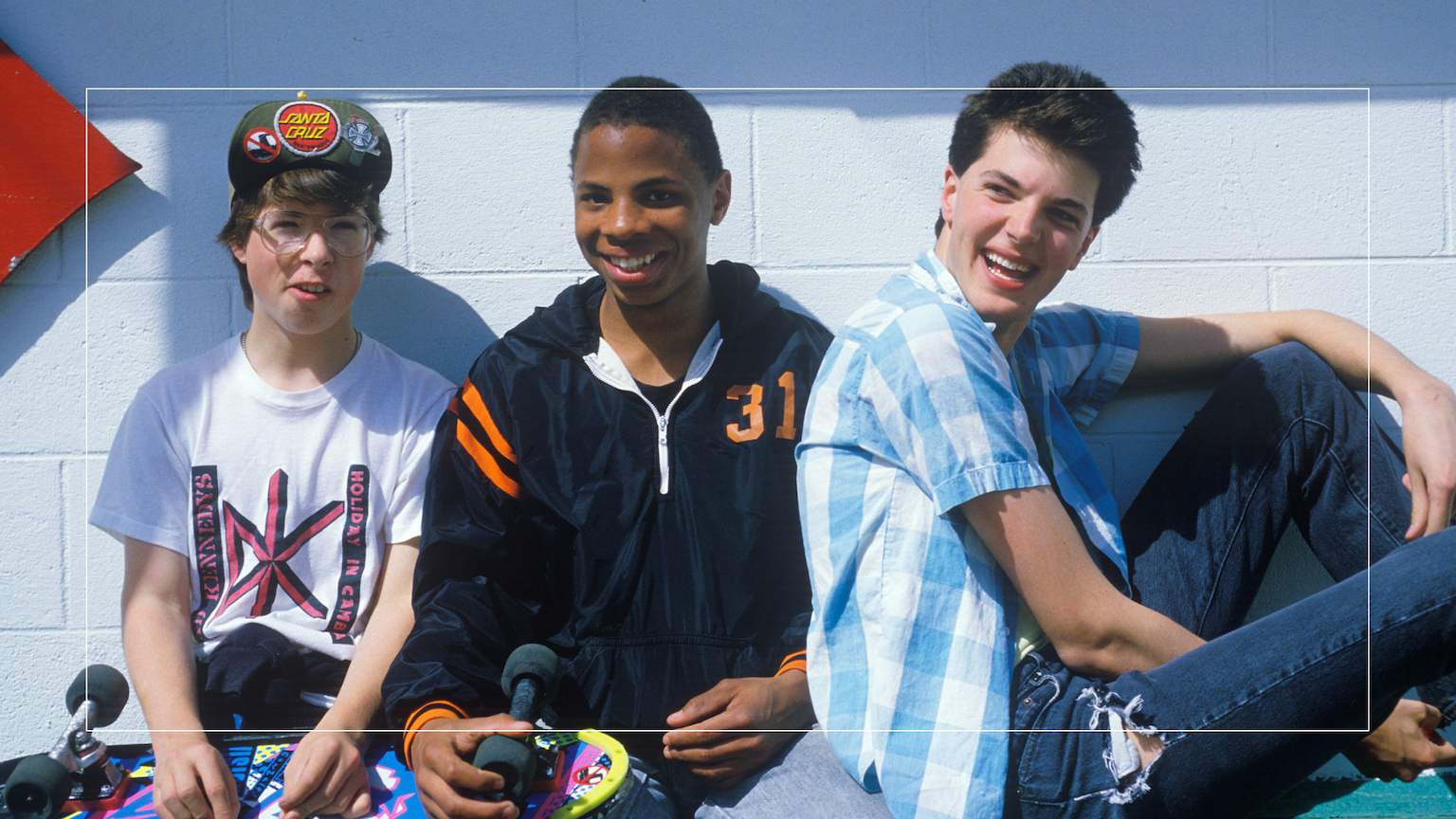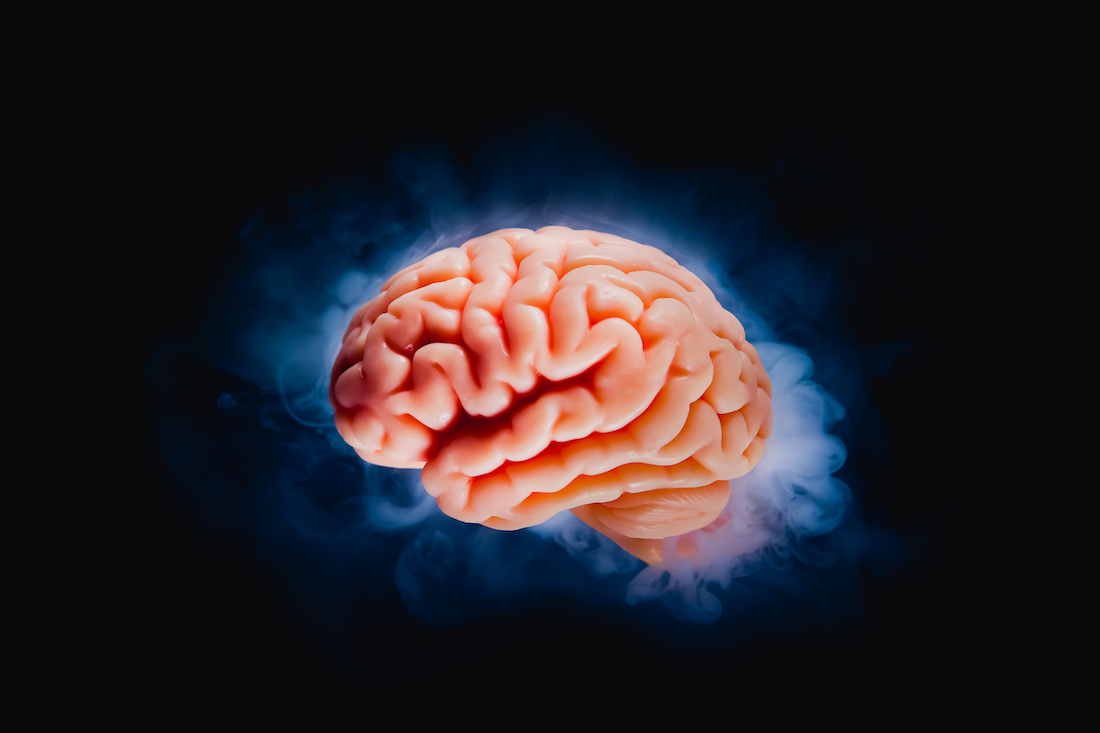Teens can have excellent executive function — just not all the time

The ability to set a goal and pursue it without getting derailed by temptations or distractions is essential to nearly everything we do in life, from finishing homework to driving safely in traffic. It also places complex demands on the brain, requiring skills like working memory — the ability to keep small amounts of information in mind to perform a task — as well as impulse control and being able to rapidly adapt when rules or circumstances change.
Taken together, these elements add up to something researchers call executive function. We all struggle with executive function sometimes, for example when we’re stressed or don’t get enough sleep. But in teenagers, these powers are still a work in progress, contributing to some of the contradictory behaviors and lapses in judgment — “My honor roll student did what on TikTok?” — that baffle many parents.
This erratic control can be dangerous, especially when teens make impulsive choices. But that doesn’t mean the teen brain is broken, says Beatriz Luna, a developmental cognitive neuroscientist at the University of Pittsburgh and coauthor of a review on the maturation of one aspect of executive function, called cognitive control, in the 2015 Annual Review of Neuroscience.
Adolescents have all the basic neural circuitry needed for executive function and cognitive control, Luna says. In fact, they have more than they need — what’s lacking is experience, which over time will strengthen some neural pathways and weaken or eliminate others. This winnowing serves an important purpose: It tailors the brain to help teens handle the demands of their unique, ever-changing environments and to navigate situations their parents may never have encountered. Luna’s research suggests that teens’ inconsistent cognitive control is key to becoming independent, because it encourages them to seek out and learn from experiences that go beyond what they’ve been actively taught.
Knowable Magazine asked Luna to share what she’s learned about the development of the brain’s executive control system — and why we might not want to rush the process, even if we could. This conversation has been edited for clarity and length.
It seems like executive function isn’t just one thing — it’s more complex than that. How do you define it? And what’s the difference between executive function and cognitive control?
Executive function and cognitive control overlap, and sometimes refer to the same exact thing. One way to understand it is that while some of our behaviors are generated externally — something like a visual stimulus or, say, someone screaming at you — and you react, the rest of our behaviors are internally driven. This means that there is a plan and there’s a goal, and you have to engage particular systems in the brain to generate your behavior, while ignoring external distractors. Those systems are pretty much what executive function is.
Cognitive control is underscoring a very important aspect of executive function, which is the ability of brain regions like the prefrontal cortex to exert control over more reactive parts of the brain like the ventral striatum, which is active when we do something rewarding or pleasurable, or even think about doing something rewarding.
How do you study cognitive control in your own lab?
It’s very basic neuroscience: We say, “Here’s a light, don’t look at it.”
What a simple thing, right? But it’s a very elegant and strong way to probe the parts of the brain that perform executive function, and specifically cognitive control. When there’s a light, your whole brain wants to look at it — but you have this instruction: Don’t look at it. To do that you have to invoke cognitive control and say, “I’m not going to look at it, I’m going to look to the other side.”
This has been a very important way to look at development, particularly through adolescence. Adolescents and kids, they’re really smart. On many typical neuropsychological sorts of tests, they appear to be at an adult level. But you can’t fool the eye movement system that responds, or not, to the experimental command to not look at a light. And we see, over and over again, that the teenagers are still not performing at adult levels.

Do researchers see similar differences in other types of tests? When does executive function, or cognitive control, reach adult levels?
We have a paper that will be coming out soon where we took behavioral data from big data repositories, so we have tens of thousands of individuals, and we applied very high-level analytics to answer that question. And we found that no matter how you’re assessing executive function, you get better and better through childhood and adolescence until around 18 to 20 years old. At that point, the number of errors you make in each test levels out.
There are two things going on here: First, there’s a lot of variability between teens, so different kids are developing differently. But there’s also a lot of variability within each individual kid. In some trials, teens show adultlike responses, and in other trials, they don’t. Adults, in contrast, tend to perform at about the same level over lots of different trials. Moreover, adult error rates are still stable when we test them 18 months later.
That’s telling us a few things. Number one, it means that the circuitry you need to produce an executive response is already there in adolescence. Second, what’s changing during development is the ability to access these systems in a sustained and reliable fashion. That happens only through the maturation of brain circuitry that, as you develop, works more consistently but less flexibly.
How do the brain systems needed for executive function develop over the lifespan? Are there certain key ages when they are being built in the brain?
During childhood, brain and behavior are driven primarily by a process of accumulation. You’re learning new things — how to walk, how to talk. You’re learning how to tap into all these cognitive abilities. Your brain is growing.
By the time you reach adolescence, everything is there. Now that you have the basic neural architecture, there’s a reversal from accumulation to specialization, based on experience. It’s a time when synaptic pruning — the elimination of connections between neurons — in the prefrontal cortex is occurring. And the connections between regions are starting to decrease, as the brain is specializing, and some connections are getting stronger.
We believe that what’s occurring is that the adolescent brain is actively exploring its environment: “Let me try it this way. Oh, now let me try this way. Oh, wait a minute, I think it worked better here.” Eventually, after much experience, the brain says, “OK. You know what, this is the optimal way, so we’re going to myelinate this circuitry.” That is like insulating the tracts, so signals are going faster, and you’re not losing so much signal on the way. But it’s also cementing it, preventing it from changing. That’s what provides the stability, and the reliability of being able to engage executive function.
What parts of the brain are important for executive function? We hear a lot about the prefrontal cortex — part of the wrinkly layer in the front of the brain. Is that the most important or only region?
Yes, we have the prefrontal cortex right here, behind your forehead. But the prefrontal cortex can’t do anything on its own. That’s not its role. Its role is to be a conductor.
One way I explain it is that, in my lab, I’m the prefrontal cortex. I’m not doing the analyses. Instead, everyone’s coming to me and telling me, “This is what we found.” I’m putting it all together and writing grants and coming up with theoretical models and so forth.
That’s what the prefrontal cortex is doing: It’s listening and organizing and telling various brain regions, “Hey, I need more from you, and I need less from you.” It’s talking to the rest of the brain. Cognitive control is really the ability of the prefrontal cortex to engage with all parts of the brain — from the reward circuits to the parietal cortex, which has to do with attention, to sensorimotor areas that control things like eye movement — whatever is needed.
Are there times when teenagers are better at cognitive control than adults?
In any laboratory, including ours, we always find the same result: Adolescents just are not as good as adults at cognitive control — except in studies where we say, if you do this trial correctly, we’re going to give you extra points for more money. And, miraculously, adolescents can then do it like adults.
How is that possible? What we have found from different studies is that the minute that they see there’s a short-term reward involved, they are pushing their system, and to even a greater level than adults. When we’ve looked at dopamine in the brain, a neurotransmitter involved in reward, we have found that kids with higher levels of dopamine in neurons in the basal ganglia are the ones really benefiting from that extra push.

Are there other types of rewards that affect how adolescents perform on these kinds of tasks?
That brings up an important question: When you’re an adolescent, what are the rewards that matter? There’s the monetary incentive. But peers are another important one, because you have all these hormones that are telling your brain it’s time for you to start making a network of peers to survive, with the intention of finding a partner and reproducing.
There’s one study from my colleague’s lab I think is great, where they looked at simulated driving. In the test, the light turns red and if you don’t stop, you lose. What they found is that adolescents performed just like adults except when their peers were present — then, all of a sudden, they became way riskier, and activity in the part of the brain that has to do with reward was elevated.
That suggests that in some circumstances, sensitivity to reward is helping with cognitive control, but in other circumstances it can be detrimental: In the driving study, enhancing reward through the presence of peers undermined cognitive control because the reward that mattered more was peer approval, not winning at the game.
How do these kinds of behavioral tests relate to how teens fare in everyday life?
In real life, behaviors like doing well in school are very complex. But at the core, even complex behaviors involve these brain processes: inhibitory control, working memory, task-switching. If you’re concerned — saying “What’s wrong with this kid?” — you need to focus on each one of those processes individually, to understand what’s not working. If a core component is not optimal, then complex behaviors that engage these components are also not going to be optimal.
How do you define “normal” or typical executive function?
That’s a great question. Our main interest is to map typical trajectories of development, with the long-term goal of having a pediatric growth chart for executive function. I’m in a psychiatric department, and so it’s important for us to understand the emergence of major mental illnesses, many of which appear in adolescence and involve deficits in executive function. One of the ideas of this pediatric growth chart is to identify risk and then find ways to fortify any weaknesses in executive function.
How does someone’s genetic background affect their executive function, and how does that relate to their risk of mental illness?
Development through childhood is two things — genetics and environment — trying to work together. When you reach adolescence, the brain says OK, you’ve had a lot of time, now we have to start making some decisions about which circuits are going to predominate. This occurs through the system that psychologist Donald Hebb famously described in the 1940s, where neural connections that get used more get stronger, and connections that don’t get used get weaker.
The brain doesn’t know what’s good or bad. If you have experiences of sadness over and over, for example, the brain’s like, “Oh, you use that circuitry a lot, we are going to make this a predominant circuit.” When it comes time for further physical reinforcement, that circuit is going to be myelinated because you’ve used it so much, like a muscle that gets stronger with use.
So, for example, you might have a genetic predisposition for depression, and live in a household where a parent has depression. You’re being exposed to negative affect daily so the circuitry is being used a lot, and that might lead, through a Hebbian process, to you developing depression as well. But hypothetically, maybe at school or through therapy that same individual gets experiences of engaging cognitive control, strengthening other circuits. We all experience negative affect, so that circuitry exists for all of us. It’s a matter of how important a role it plays.
When you’re talking about things like bipolar disorder or schizophrenia, there can be a very strong inherited predisposition. But there’s a good reason that diagnosis of these disorders is not done until adulthood. It’s because the brain hasn’t decided yet. For example, if you have ADHD when you’re young, depending on your environment and experience that could turn into a typical brain, or into a wide range of different things, like substance use or even bipolar disorder.
So yes, it’s a period of risk, but also a period of opportunity to strengthen alternative, helpful systems like cognitive control.
Are there things we can do during adolescence that can reduce the risk of mental illness?
I’m not a clinician, so this is not my area of expertise, but the idea is that if you do something like cognitive behavioral therapy, CBT, which trains you to start to observe your emotional reactions and to get your prefrontal executive system to engage, your control will get stronger. That can help build resilience and ways to cope, even if you have a genetic predisposition to mental illness.
Should we be trying to accelerate the development of executive function in children?
There are some colleagues who have proposed, based on certain types of training, that perhaps you can get executive function earlier. But my take on it is, why? Why would we want this to come on earlier? It’s important to not always have executive function at the forefront, especially when you should be experimenting and should be trying all your circuits, so that you can have a very well-informed brain as it makes its decisions about which circuits it needs to strengthen and which ones it doesn’t. So, I’m not convinced you can really push executive function, but even if you did, whether it would be the right thing to do.
If the brain is still developing past 18, as you say, what does that mean for how much responsibility teens and young adults have for their actions and decisions?
There are important nuances. In the juvenile justice system, one of the arguments against harsh sentences for young offenders is that we don’t know who that kid is — what they did at the time may not be who they really are going to become. So, getting a life sentence doesn’t seem very useful because that might have just been part of the risk-taking and, yes, we keep an eye on them, but we don’t put them in there for 60 or 70 years.
That’s one part of the story. Another part of the story that my students have become passionate about is legislation on gender-affirming care. Some people have used the work that my colleagues and I have done to say, “Hey, look, the brain is not done until the 20s, so adolescents cannot make these sorts of decisions.” But we argue that when teenagers have time to deliberate — when they’re surrounded not by peers who are more reward-driven, but by adults who have more stable access to cognitive control — we think teenagers can make these sorts of long-term decisions. It’s not easy, but it’s doable.
We think that the decision to seek gender-affirming care is a good model for what teenagers can do with adult support, because it’s something that takes months, even years, to plan out and deliberate about. For many teenagers this is something they have known since they were very young. We agree we need to help teenagers avoid making impulsive decisions about gender-affirming therapy — but there are a lot of things that make it distinct from delinquent behavior in teens, which is usually about impulsive decision-making. So, there are all these subtleties about what the implications might be.
I think we all know people who, as adults, are more comfortable taking risks, or more easily distracted, than others. Does that mean their executive function is deficient or they are somehow less “mature”?
That is a really interesting point. I was a crazy risk-taking adolescent. I think what occurred over development is, I’m still a risk taker but now I do it in science. I was also the one who could be very distractible. Like, for me, my biggest fear was boredom, and it still is. When I write a grant, I’m not going to write the next logical step. I want to be risky. I want to move science in big jumps, not little steps.
So I feel like my risk-taking kind of stayed, but it transformed.
This article originally appeared in Knowable Magazine, a nonprofit publication dedicated to making scientific knowledge accessible to all. Sign up for Knowable Magazine’s newsletter.





